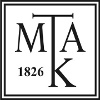Hauert, Christoph and Szabó, György (2025) Phase transitions and symmetry breaking of cooperation on lattices. PHYSICAL REVIEW E: COVERING STATISTICAL NONLINEAR BIOLOGICAL AND SOFT MATTER PHYSICS (2016-), 111 (5). No.-054308. ISSN 2470-0045
|
Text
hauert_pre25.pdf - Published Version Download (3MB) | Preview |
Abstract
The donation game is an instance of a social dilemma with a single parameter given by the cost-to-benefit ratio of cooperation, r. In spatial settings, limited local interactions and clustering are capable of supporting cooperation by reducing exploitation from defectors. Traditionally, the interaction and competition neighborhoods are identical. Here we discuss intriguing differences in the dynamics that arise when separating the neighborhoods. On the square lattice, disjoint interaction and competition neighborhoods are easily realized by considering nearest-neighbor interactions and second-nearest-neighbor competition. Incidentally, the number of first and second neighbors is the same. More importantly, this separates the population into two competing subpopulations, with interactions solely between subpopulations but competition within subpopulations. For negative cost-to-benefit ratios, r, the donation game turns into a harmony game, and defection becomes an act of spite. In the traditional setup, the extinction of cooperators under harsh conditions, large r, and that of spiteful defectors, r < 0, exhibits critical phase transitions with characteristics of directed percolation. In contrast, with two subpopulations spiteful behavior cannot persist, while the extinction of cooperators exhibits the same characteristics. Most intriguingly, however, for smaller r spontaneous symmetry breaking in the levels of cooperation between the two subpopulations is observed. The symmetry breaking resembles the sublattice ordering occurring in the antiferromagnetic Ising model. Within the twofold-degenerate phases, decreasing the cost-to-benefit ratio induces extremely large fluctuations (bursts) in the frequencies of cooperation. These bursts eventually drive the system into one of the absorbing states: occasionally homogeneous defection in both sublattices, but usually only in one and homogeneous cooperation in the other, achieving perfect asymmetry.
| Item Type: | Article |
|---|---|
| Subjects: | Q Science / természettudomány > QA Mathematics / matematika Q Science / természettudomány > QC Physics / fizika |
| SWORD Depositor: | MTMT SWORD |
| Depositing User: | MTMT SWORD |
| Date Deposited: | 21 May 2025 09:43 |
| Last Modified: | 21 May 2025 09:43 |
| URI: | https://real.mtak.hu/id/eprint/219099 |
Actions (login required)
 |
Edit Item |



